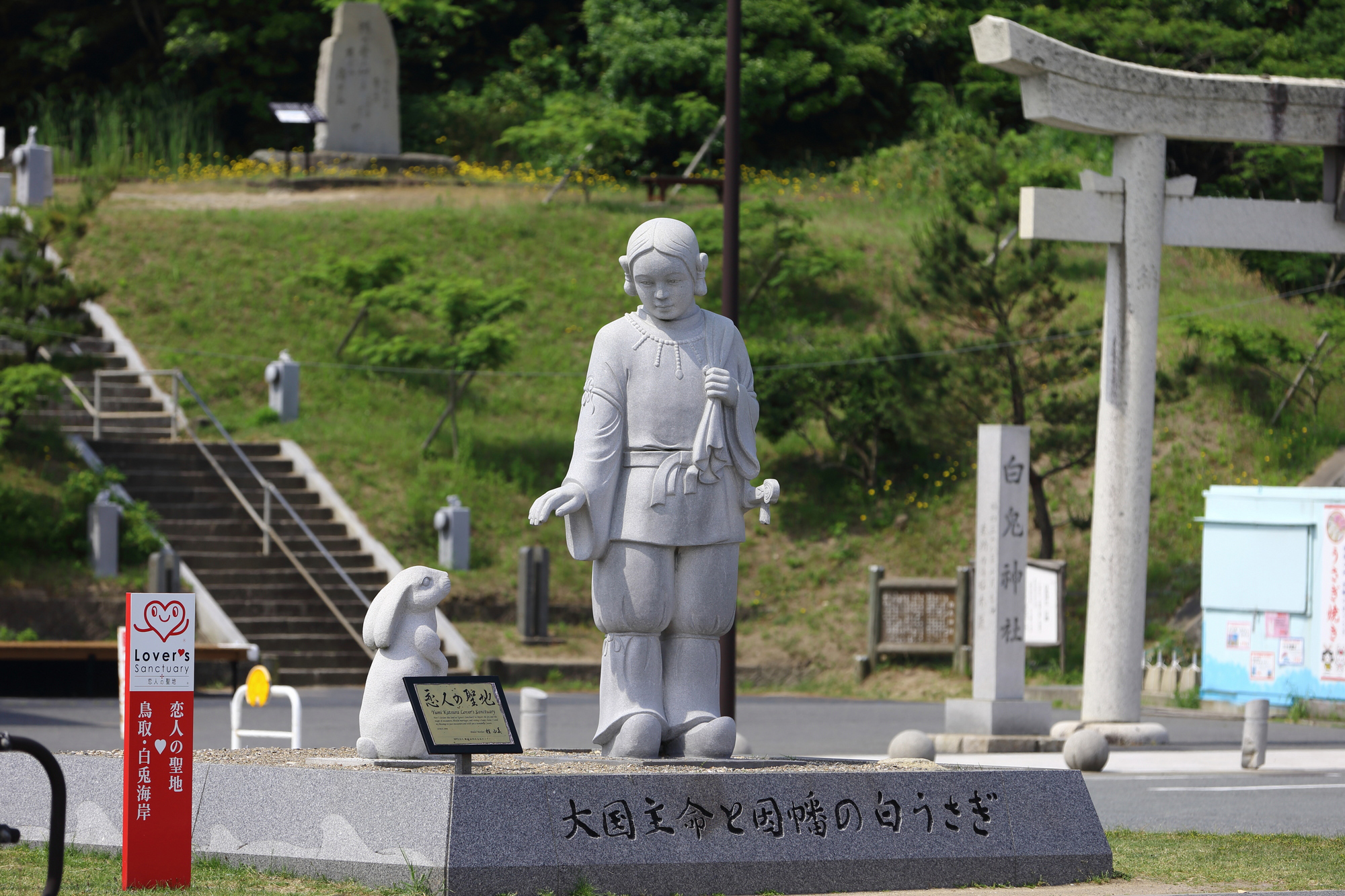The myth of the “Hare of Inaba”
— The first tale of the god, Okuninushi no kami —
Exploring the Kojiki
Updated on Nov 20 2018
Japan’s oldest book, the Kojiki. It dramatically illustrates the history of Japan from the beginning of the world, the appearance of the deities, to the Imperial succession. Behind each impressive episode, there exist numerous “mysteries” that are yet to be solved even today. By exploring each, we will think about the origin of Japanese beliefs and culture.

Stone statues of Okuninushi and the white rabbit stand along the Hakuto Coast, which is said to be the site of the myth.
A tale of a descendant of Susanoo
Although most Japanese myths were originally handed down individually, in the Kojiki, tales are arranged as rough stories flowing from the appearance of the gods through the Imperial succession.
The well-known myth of the “Hare of Inaba” is located near the beginning of a story starring a descendant of Susanoo, Oonamuchi, who grew up to become the god and master of the land.
Oonamuchi, the one who saved a frail, white hare
It is said that Oonamuchi had many elder brother gods. On one occasion, Oonamuchi accompanied these gods on a trip to visit Princess Yakami, who was living in Inaba Province. Each of the brothers were hoping to gain her hand in marriage, and Oonamuchi carried all their bags. On their way there, they happened to see a white hare that was suffering after having its skin torn off because it had cheated a group of wanizame (a type of mythological shark or crocodile).
The elder brother gods didn’t bother to listen to the hare’s troubles, and they suggested a treatment that caused the hare even more suffering. Soon thereafter, Oonamuchi happened to come across the hare and told it a good method of treatment after carefully listening to its tale, and then the hare fully recovered.
This hare is known as “Inaba no shirousagi” (the White Hare of Inaba) in the Kojiki. The hare predicted that Oonamuchi would actually be the one to marry Princess Yakami. This tale plays the role of elucidating the nature of how Oonamuchi became a king.
Is the shirousagi a white hare?
By the way, shirousagi is written in the Kojiki using the characters 素兎. There are no other animals using the character 素 in the Kojiki except for this hare, though the names of gods or animal messengers of gods are sometimes written using the characters 白, such as 白犬 and 白鹿.
It is possible to read the character 素 (generally read as moto) as shiro (meaning “white”) because the character 素 includes the nuance of 白 (white), but there is the possibility that the word 素兎 was read as “motousagi.” As the skinned hare is described in the text as 裸兎 (a naked hare), the Kojiki might want to express the healed hare as wearing 白衣 (a white robe).
Oonamuchi, who saved the White Hare of Inaba and married Princess Yakami, survived various trials and tribulations, married several goddesses, and became the god and master of the land by pushing his elder brother gods aside, in the end earning the name “Okuninushi no kami.”
-Kokugakuin University has been selected “as a place for the promotion of the study of the Kojiki” by the private university branding project of the Ministry of Education in 2016.-

published in The Japan News on 13/11/2018
Masahiro TANIGUCHI
Research
Japanese literature of ancient times (Kojiki, Nihon-shoki, topography)
Papers
“The Old Man Says” in izumono-kuni-fudoki(2017/05/10)
Tatenui County and Mount Kannabi in Izumonokuni-fudo-ki : Reading What the Genius Says(Reading)(2009//)

